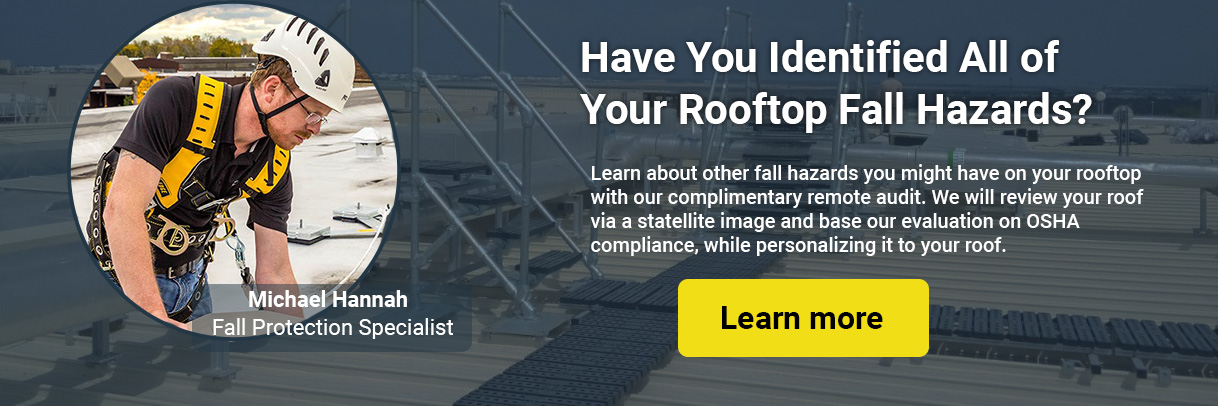How to Work on a Roof Without Fall Protection

Figuring out how to work on a roof without fall protection is easier than you think. Simply consider the task you are performing (whether that be maintenance, construction, or really anything else) assess the hazards, divide by the number of workers and factor in the use of personal protective equipment (adjusted for recent revisions to written policy) and you will find that without fail, every single time, you come to the same answer for how to work on a roof without fall protection:
You can't.
If you are working on a roof, then fall protection of some kind is necessary. Although my previous statement may, at first glance, seem false (it can be impossible to find acceptable anchorage points on some roofs), let’s take a moment to review what “fall protection” actually is. Is fall protection a harness, lanyard, and anchor point (also known as a personal fall arrest system or PFAS)? Yes, it is. But fall protection might also be safety railings, parapets, travel restriction, warning lines with safety monitors, or even, in some cases, distance.
I urge you now to come up with a scenario where this is not true. Even the one exemption I know of isn’t a full exemption: a roofing supply delivery person who is distributing materials on a roof can do so without fall protection, however, they must be protected as they gain access to the roof and if an anchor point is available once up there, they MUST use it ( reference).
Let’s take a moment to think about this. We all know that, according to OSHA, when you’re exposed to a fall greater than 6’ in construction and 4’ in general industry (with a few exceptions), you must be protected from that hazard. This makes it pretty obvious that anybody close to the roof’s edge would need PFAS, rails, or some means of fall protection. We’re probably all in agreement about that.
But what about when we get further away? How far can I be from the roof’s edge before I can stop worrying about fall protection? Is there even an answer to that question?
No, there isn’t.
As far as OSHA is concerned, there is no safe distance from the edge of a roof, so you must be protected. This means that you must have rails, fall arrest systems, or a warning line/safety monitor setup no matter where it is you are working. Keep in mind though, that unless you have a written fall protection plan stating why other means aren’t feasible, the warning line and monitor setup is only available to roofers doing roofing work. Your mechanical companies doing HVAC maintenance, your solar company, and anybody else that would need to perform work up there would not be able to choose this option.
Luckily, OSHA recognizes the fact that somebody who is working in the center of a large roof with no reason to leave that work area has very little actual exposure to a roof-edge fall. Therefore, if you are working on a roof and have a warning line set up more than 15 feet away from the edge, then OSHA would issue you a de minimus violation (in other words, you may receive the violation for notification purposes but there would be no fine attached). Still, you must have that warning line up so that your employees know they should not be wandering away from that work area. If they do, it could put them in harm’s way and it could make your company vulnerable to citations and penalties.
The point is this: roofing fall protection requirements can be complicated, which often causes people to make mistakes when determining what is necessary. The bottom line is that something is necessary. The worst mistake you could make would be to do nothing at all. If you find yourself working on a roof with no warning line, no monitor, no fall arrest system, no rails, and no nets, you should not be working up there.
Period.



